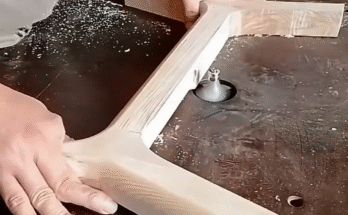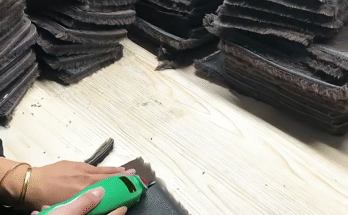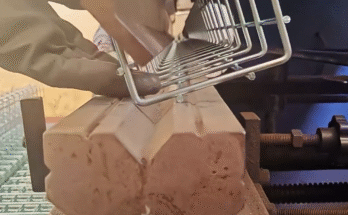Applying a spray paste with a line grid pattern to a roof is a specialized process often used for waterproofing, sealing, or enhancing the durability of various roofing materials. This method ensures uniform coverage, proper adhesion, and can create a reinforced layer. Here’s a step-by-step breakdown of this crucial roofing technique.
Step 1: Comprehensive Roof Inspection and Preparation 🔍
Before any application begins, the roof must be thoroughly assessed and prepared.
- Initial Inspection: Conduct a detailed inspection of the entire roof surface. Look for existing damage, loose debris, standing water, moss, algae, or areas requiring repair.
- Cleaning: Thoroughly clean the roof. This typically involves power washing to remove dirt, grime, loose granules, moss, algae, and any other contaminants. Ensure the surface is completely dry before proceeding.
- Repairs: Address any existing roof damage. This might include patching holes, sealing cracks, replacing damaged shingles or tiles, and securing loose flashing. A smooth, intact substrate is essential for proper paste adhesion.
- Perimeter Protection: Mask off or protect adjacent areas (walls, windows, gutters, landscaping) that should not receive the spray paste. Use painter’s tape and plastic sheeting.
Step 2: Safety Measures and Equipment Setup 👷♂️
Safety is paramount when working on roofs, especially with spray equipment.
- Personal Protective Equipment (PPE): Ensure all workers wear appropriate PPE, including safety glasses, respirators (for paste fumes), gloves, non-slip footwear, and fall protection (harnesses, lifelines) as required by local regulations.
- Ventilation: If working in an enclosed or semi-enclosed area (e.g., a low-slope roof with high parapet walls), ensure adequate ventilation.
- Spray Equipment Setup:
- Mixer: Prepare the spray paste according to manufacturer specifications. This often involves mixing components in a large drum with a mechanical mixer to achieve a consistent, lump-free consistency.
- Pump and Hoses: Set up the high-pressure spray pump, ensuring all hoses are securely connected and free of kinks or leaks.
- Spray Gun: Attach the appropriate spray gun and nozzle for the specific type of paste and desired spray pattern.
- Compressor (if air-assisted): If the system uses an air compressor, ensure it’s properly connected and regulated.
Step 3: Primer Application (If Required) 🎨
Some spray paste systems require a primer for optimal adhesion.
- Primer Selection: Select a primer compatible with both the roof substrate and the spray paste.
- Application: Apply the primer evenly across the entire roof surface using a roller, brush, or a low-pressure spray system.
- Curing Time: Allow the primer to dry and cure fully according to the manufacturer’s instructions before proceeding to the next step. This is crucial for proper bonding.
Step 4: Establishing the Line Grid System 📏
This step ensures uniform application and proper coverage.
- Layout Planning: Determine the desired grid pattern (e.g., 2×2 feet, 3×3 feet). This grid acts as a visual guide for consistent paste thickness and overlap.
- Marking the Grid: Use chalk lines, temporary markers, or a laser guideline system to mark the grid lines across the roof surface. These lines will guide the spray applicator.
- Reference Points: Establish clear reference points (e.g., along eaves, ridges, or parapet walls) to ensure the grid is square and consistent across the entire roof.
Step 5: Spray Paste Application with Grid Guidance 💨
The core of the process – applying the paste.
- Test Spray: Perform a test spray on a scrap piece of material or an inconspicuous area to verify the spray pattern, consistency, and pressure settings.
- Consistent Passes: Begin spraying the paste, moving the spray gun in consistent, overlapping passes. The grid lines serve as a visual guide to ensure each pass covers the designated area and overlaps correctly with the previous one.
- Uniform Thickness: Maintain a consistent distance between the spray gun and the roof surface to achieve a uniform thickness of the paste. Avoid over-application or under-application in any single area.
- Multi-Directional Application (Optional): For enhanced reinforcement and coverage, some systems recommend applying a second coat in a perpendicular direction to the first, creating a cross-hatch pattern within the grid.
- Edge and Detail Work: Pay close attention to edges, seams, penetrations (vents, pipes), and flashing. These areas often require careful, precise application or even manual brushing to ensure complete coverage and sealing.
Step 6: Curing and Final Inspection ✅
Allowing the paste to set and ensuring quality.
- Curing: Allow the spray paste to cure fully according to the manufacturer’s specifications. Curing time can vary significantly based on the product, temperature, and humidity. Avoid foot traffic or placing objects on the roof during this period.
- Final Inspection: Once cured, perform a final, thorough inspection of the entire roof.
- Check for Uniformity: Ensure the paste is evenly applied with no thin spots or excessive build-up.
- Adhesion: Verify proper adhesion to the substrate.
- Sealing: Confirm that all seams, penetrations, and edges are properly sealed.
- Defects: Look for any bubbles, pinholes, or other defects that might compromise the waterproofing.
- Cleanup: Clean all spray equipment immediately after use, following the manufacturer’s guidelines, to prevent paste from hardening in the lines or gun. Remove all masking and protective coverings.
The Grid Advantage: Precision and Protection 🌟
The roof spray paste line grid process is a highly effective method for creating durable, seamless, and protective roof coatings. By combining precise application techniques with the guidance of a grid system, it ensures consistent material thickness and optimal performance, providing long-lasting protection for the building beneath.



